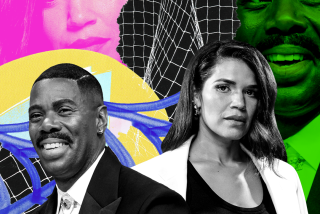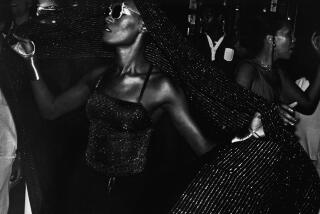Community Essay : ‘African American’ Is a Term of Need, Not Vanity : It serves as antidote to an ‘identity vacuum.’
- Share via
Late last month, my wife and I went to the John Paul Getty Museum in Malibu to see a photography exhibit titled “Hidden Witness.” The photographs were of and by African Americans, dating from the years shortly before, during and after the Civil War. The exhibit was intense and filled with ironies.
Here were the expressions of hope and sadness and joy of our ancestors. We were communicating personally and directly with people who had been dead for more than 100 years. Indeed, for me those people were not only dead, they had never existed in my mind’s eye. This is not to say that I had never seen images of African people or African American people in period drawings or paintings or described in historical literature or film. What my wife and I had never seen were the faces themselves; what we had never heard were the voices that spoke through the faces.
I did not recognize the faces as individuals I knew, but I recognized enough to know that my family was fully represented. Some of the faces were very dark, displaying a direct connection to Africa. Some of the faces were pale enough that without description I would not have known there was African blood beneath the skin. Some, like me, were in between.
At one point, my examination of the images was interrupted by an overheard comment from a thirtyish white woman who stood nearby. “Why do all the descriptions refer to the blacks as African Americans and the whites simply as white?” I couldn’t hear her companion’s response, but the comment and tone made me feel uncomfortable. I wasn’t sure at the time why it bothered me, but since then I have come up with a theory.
Obviously, taken out of the context of the conversation, the comment means little. But in the context of the exhibit, it meant a lot. The meaning I took from it, and from the woman’s tone, was that she sensed unfairness and felt cheated by the guest curator who had written the descriptions: If the whites are called whites, shouldn’t the blacks be called blacks? If the African Americans are called African Americans, shouldn’t the European Americans be called European Americans? Isn’t this “African American” thing just a little bit silly?
If my interpretation was correct, I feel sad for the woman and discouragement for an exhibit that was otherwise wholly inspiring to me. The woman had missed the boat. The faces we had both looked at were the faces of people and the children of people who had been packed into the holds of ships and carried thousands of miles away from home and told that they had no identity. The identity vacuum had been filled, on the shores of the country where we were both born, with names like Mammy, Sambo, Darkie and worse.
If European Americans are unfairly referred to as “white,” it is only because no self-definition is required. Most whites I know can easily identify the sources of their ethnic identity. Referring to them as “white” does not deprive them of their ability to proudly and legitimately claim that they are half Irish or quarter German or part French, English or Croatian.
Almost none of the blacks I know can stake a claim to a country or region of Africa, or even to the European part of their ancestry that they know is there, but is not chronicled in writing or even as family history.
I wonder, if it were possible for the woman I overhead to trade the hollow label “white” for the coveted “African American,” if she would willingly do so, knowing that she would take all of the ingredients of identity that go along with the label.
I wonder if, when she looked into the faces in the picture frames, she could have seen that pain in the images I saw, if she would trade the slight of being “white” for the gift of being “African American.”
More to Read
The biggest entertainment stories
Get our big stories about Hollywood, film, television, music, arts, culture and more right in your inbox as soon as they publish.
You may occasionally receive promotional content from the Los Angeles Times.










